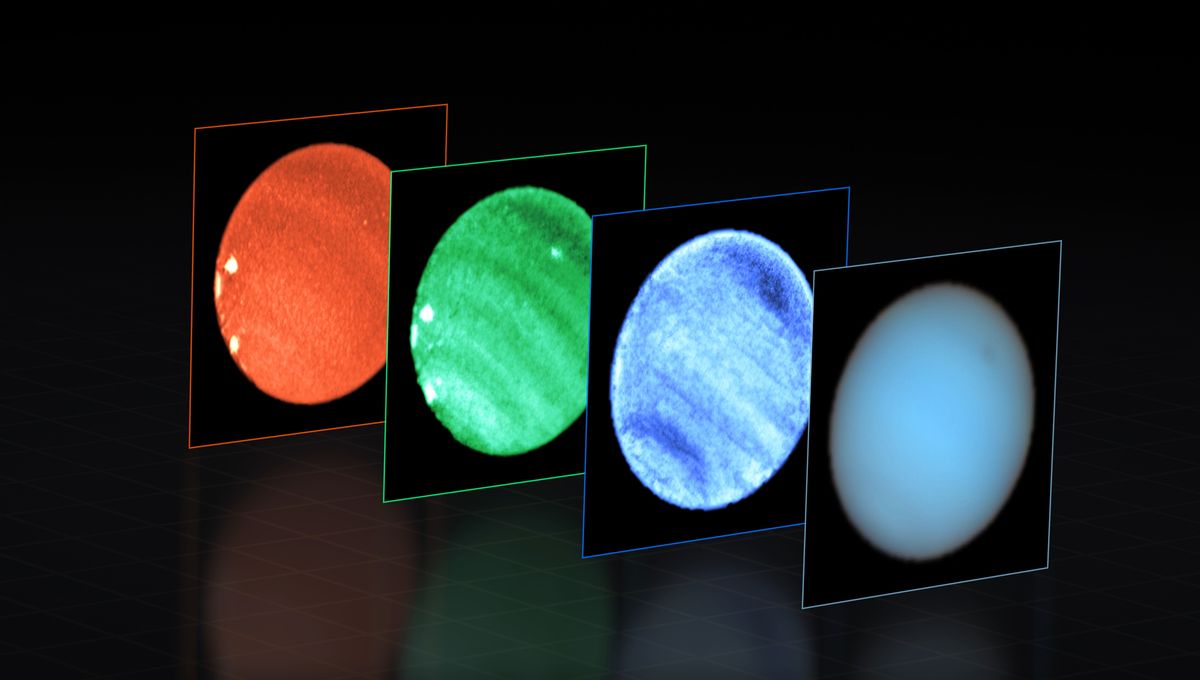
For the first time, astronomers have observed a dark spot on Neptune from the ground and also discovered a bright spot companion next to it. These features have no clear origin, but the work provides new insight into how these peculiar features come to form in the first place.
While spots like the Great Red Spot on Jupiter have been known for hundreds of years, it was only in 1989 that the flyby of Voyager 2 also revealed spots on Neptune. Spots on the big blue planet are short-lived, which is very different from the Great Red Spot. In 2018, Hubble saw new ones on Neptune, which were were followed up with the European Southern Observatory’s Very Large Telescope (VLT).
Thanks to the instruments on the VLT, astronomers were able to measure the sunlight reflected from Neptune at different depths in the atmosphere, giving them the ability to study these spots in three dimensions.
“I’m absolutely thrilled to have been able to not only make the first detection of a dark spot from the ground but also record for the very first time a reflection spectrum of such a feature,” Patrick Irwin, professor at the University of Oxford in the UK and lead researcher on the study, said in a statement. “Since the first discovery of a dark spot, I’ve always wondered what these short-lived and elusive dark features are.”
The team believes that the darkness of the spot is caused by the presence of a molecular structure that is less reflective. This could be caused by a dark material floating upwards from a deeper layer, or the condensation of hydrogen sulfide ice on the product of a light-induced chemical reaction. Both scenarios are very different from Jupiter’s Great Red Spot, which is a massive anticyclone.
“In the process we discovered a rare deep bright cloud type that had never been identified before, even from space,” explained study co-author Michael Wong, a researcher at the University of California, Berkeley, USA.
The bright cloud on Neptune is something completely different and, unlike other bright clouds observed, it appears right next to the dark spot at the same level in the atmosphere. There are still many unknowns about these structures, but the current study shows how much ground-based observatories have improved over the last several decades.
“This is an astounding increase in humanity’s ability to observe the cosmos. At first, we could only detect these spots by sending a spacecraft there, like Voyager. Then we gained the ability to make them out remotely with Hubble. Finally, technology has advanced to enable this from the ground,” concluded Wong, before adding, jokingly: “This could put me out of work as a Hubble observer!”
The study is published in Nature Astronomy.
Source Link: Dark And Bright Spots Seen On Neptune From Earth For The First Time